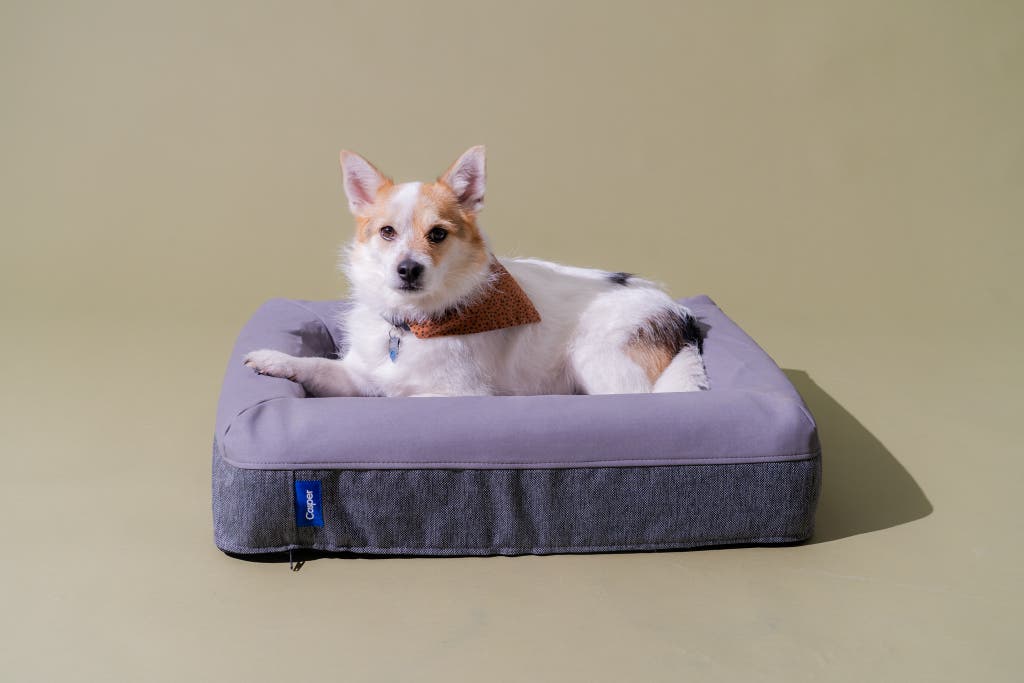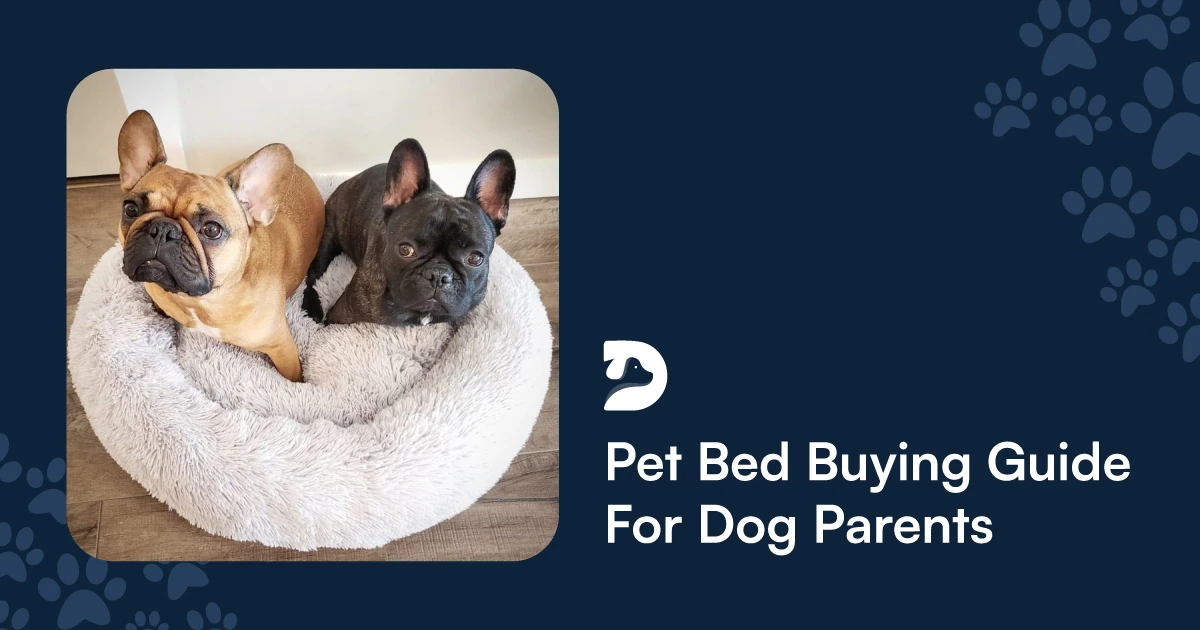Looking for the perfect dog bed for your furry friend? Look no further! In this comprehensive guide, we will explore everything you need to know about buying the best dog bed. From understanding the importance of selecting the right bed for your pup’s size and breed, to choosing the perfect material for their comfort, we’ve got you covered. But before we dive into all the tips and tricks, let’s answer one fundamental question: how often should you buy a dog bed?
Factors to Consider
When it comes to choosing the perfect dog bed for your furry companion, there are several important factors to consider. These factors will ensure that you select a bed that not only meets your dog’s needs but also provides them with the utmost comfort and support. Let’s delve into each of these factors in more detail.
Size of the Dog
The size of your dog plays a vital role in determining the type and size of the bed you should choose. A small breed dog, such as a Chihuahua or a Yorkshire Terrier, will require a bed that is significantly smaller than that of a large breed dog like a German Shepherd or a Golden Retriever. It’s essential to select a bed that allows your dog to stretch out and move comfortably without being cramped. So, before you begin your search for the perfect dog bed, it’s crucial to know your dog’s size.
Sleeping Habits
Just like humans, dogs have their unique sleeping habits. Some dogs love to snuggle up and feel cocooned in their beds, while others prefer to stretch out and have plenty of space to move around. And then, there are those dogs who enjoy curling up and feeling secure in a cozy nook. Observing your dog’s sleeping habits will help you determine the type of bed they will prefer – whether it’s a bolster bed for snugglers, an elevated bed for stretch-out sleepers, or a donut-shaped bed for curl-up sleepers.
Health Conditions
Consider any existing health conditions your dog may have when selecting a dog bed. Dogs with joint and muscle issues, such as arthritis or hip dysplasia, benefit greatly from orthopedic or memory foam beds. These beds provide the necessary support and cushioning to alleviate pressure on their joints. If your dog suffers from allergies or sensitivities, choosing a dog bed with hypoallergenic materials can help prevent any adverse reactions. For dogs with incontinence issues, waterproof beds with removable and washable covers are ideal.
Age of the Dog
The age of your dog is another crucial factor to consider when purchasing a dog bed. Puppies have different needs compared to adult and senior dogs. Puppies require beds that are easy to clean, as accidents are more likely to happen during potty training. They also benefit from beds with supportive materials to promote healthy bone and joint development. Adult dogs may require more durable beds that can withstand their energetic nature. Senior dogs often have specific health concerns, and selecting a bed that provides orthopedic support can help alleviate their discomfort.
Climate and Environment
The climate and environment in which you and your dog live can also influence the type of bed you choose. If you live in a colder climate, consider a bed with additional insulation or a heated bed to keep your furry friend warm and cozy. For warmer climates, a bed with cooling properties or breathable materials is ideal to prevent overheating. Additionally, if your dog spends a lot of time outdoors or has a tendency to get dirty, a waterproof and easy-to-clean bed would be a sensible choice.
Types of Dog Beds
Now that we’ve discussed the important factors to consider, let’s explore the different types of dog beds available. Understanding the various options will help you make an informed decision and choose the perfect bed for your canine companion.
Orthopedic Dog Bed
Orthopedic dog beds are specially designed to provide support and alleviate joint and muscle pain, making them an excellent choice for dogs with arthritis or other similar conditions. These beds are made with high-density foam that contours to your dog’s body, relieving pressure points and promoting proper alignment.
Memory Foam Dog Bed
Similar to orthopedic beds, memory foam dog beds offer excellent support and comfort. The memory foam material molds to your dog’s body shape, providing superior pressure relief. These beds are especially beneficial for dogs with joint issues or those recovering from surgery.
Elevated Dog Bed
Elevated dog beds, also known as cot-style beds, are designed to keep your dog off the ground. These beds have a sturdy frame with a fabric sleeping surface stretched across it. Elevated beds provide excellent airflow, keeping your dog cool and comfortable, and are also a great choice for outdoor use.
Bolster Dog Bed
Bolster dog beds feature raised sides that provide a sense of security and support for dogs who love to curl up or rest their heads on a pillow-like surface. These beds often come in various shapes and sizes, accommodating different sleeping positions and preferences.
Waterproof Dog Bed
Waterproof dog beds are a practical choice for dogs prone to accidents or those who enjoy outdoor activities such as swimming. These beds have a waterproof cover or lining that repels moisture and prevents it from seeping into the bedding material. This feature helps keep the bed clean and fresh while protecting it from damage.
Choosing the Right Size
Selecting the correct size of the dog bed is crucial to ensure your dog’s comfort and support. Here are some essential tips to consider when determining the right size for your furry friend.
Measure Your Dog
Before buying a dog bed, it’s important to measure your dog accurately. Measure from the tip of their nose to the base of their tail for length and from the floor to the top of their shoulder for height. These measurements will help you determine the appropriate bed size for your dog.
Consider Weight and Height
In addition to measuring your dog’s length and height, you should also consider their weight and height when choosing a bed. If your dog is on the heavier side, you’ll want to select a bed with a sturdier frame and supportive materials that can withstand their weight. Additionally, if your dog is a tall breed, opt for a bed with higher walls or an elevated bed to provide them with ample space.
Allow Room for Stretching
Dogs love to stretch out and have room to move around comfortably, especially when they’re sleeping. To ensure your dog has enough room to stretch to their heart’s content, choose a bed that is slightly larger than their measurements. This extra space will allow them to sprawl out and relax without feeling cramped.
Choose a Slightly Larger Size
When in doubt, always choose a slightly larger size bed for your dog. It’s better to have a bed that is slightly too big than one that is too small. Dogs appreciate having that extra space to spread out and get comfortable, and you’ll have peace of mind knowing they’re not feeling restricted or confined in their bed.
Understanding Your Dog’s Sleeping Habits
Just like humans, dogs have their preferred sleeping positions and habits. Understanding your dog’s sleeping habits will help you choose a bed that caters to their unique needs. Here are three common sleeping styles dogs have:
Cozy Snuggler
If your dog loves to snuggle up and feel secure when they sleep, they are considered a cozy snuggler. These dogs will benefit from beds with raised sides or bolsters that mimic the feeling of being wrapped in a warm hug. Bolster beds provide the perfect combination of comfort and security for these cuddly canines.
Stretch Out Sleeper
Some dogs prefer to stretch out when they sleep, sprawled across the bed with their legs extended. If your dog is a stretch-out sleeper, they will require a bed that offers ample space for them to stretch their entire body comfortably. An elevated bed or a large cushion-style bed would be ideal for these pups.
Curl Up Sleeper
Curling up into a cozy ball is the preferred sleeping position for many dogs. These curl-up sleepers enjoy feeling enclosed and safe, so a bed with raised sides or a donut-shaped bed is perfect for them. These beds provide the perfect cozy cocoon for dogs who prefer to curl up comfortably.
Considering Health Conditions
Your dog’s health conditions should be taken into account when selecting a dog bed. Here are a few common health issues and the types of beds that can help alleviate their symptoms:
Joint and Muscle Issues
Dogs suffering from joint and muscle issues, such as arthritis or hip dysplasia, benefit greatly from beds that provide adequate support and cushioning. Orthopedic beds with high-density foam or memory foam are designed to relieve pressure on their joints and promote proper alignment. These beds can help alleviate pain and discomfort, allowing your dog to get a restful night’s sleep.
Allergies and Sensitivities
If your dog has allergies or sensitivities, it’s important to choose a bed with hypoallergenic materials. Beds made with cotton or polyester are often hypoallergenic and resistant to allergens such as dust mites and pet dander. Additionally, opting for a bed with a removable and washable cover will make it easier to keep the bed clean and free from allergens.
Incontinence Issues
For dogs with incontinence issues, a waterproof bed is a must. These beds have a waterproof cover or lining that prevents any liquids from seeping into the foam or padding. Choosing a bed with a removable and washable cover is also beneficial, as accidents can be easily cleaned up without damaging the bed’s interior.
Dog Bed Materials
Understanding the different materials used in dog beds will help you select the most suitable option for your furry friend. Here are some common materials found in dog beds:
Standard Foam
Many dog beds are made with standard foam, which provides a good balance of comfort and support. This type of foam is often lightweight, affordable, and durable, making it a popular choice for dog beds.
Memory Foam
Memory foam is a popular choice for dogs with joint issues, as it molds to the shape of their bodies, providing superior support and pressure relief. This material helps alleviate pain and promotes a restful sleep.
Orthopedic Foam
Orthopedic foam is specifically designed to provide optimal support for dogs with joint or muscle problems. This high-density foam evenly distributes your dog’s weight, reducing pressure on their joints and muscles. Orthopedic foam beds are ideal for older dogs or those recovering from surgery.
Cotton and Polyester
Cotton and polyester are often used in the covers or outer layers of dog beds. These materials are soft, hypoallergenic, and easy to clean. Cotton provides breathability, while polyester offers durability.
Chew-Resistant Material
If your dog is prone to chewing or has destructive tendencies, consider a dog bed made from chew-resistant materials. These beds are often reinforced with additional layers or have a durable, heavy-duty cover that can withstand your dog’s chewing habits.
Maintenance and Cleaning
Keeping your dog’s bed clean is essential for their health and comfort. Here are some factors to consider when it comes to the maintenance and cleaning of a dog bed:
Removable Covers
Opting for a dog bed with a removable cover is highly recommended. Removable covers make it easy to clean any dirt, hair, or stains that may accumulate on the bed over time. Simply remove the cover and throw it in the washing machine for a quick and convenient clean.
Machine Washable
In addition to removable covers, consider a dog bed that is entirely machine washable. This feature makes it effortless to keep the entire bed clean, rather than just the cover. Machine washable beds are particularly beneficial for dogs with allergies or sensitivities, as regular cleaning helps eliminate allergens.
Waterproof and Stain-Resistant
If you have a dog who is prone to accidents or enjoys outdoor adventures that may leave them dirty, a waterproof and stain-resistant bed is a smart choice. These beds repel liquid and prevent stains from setting in, making cleanup a breeze.
Regular Cleaning and Maintenance
Regular cleaning and maintenance are essential for your dog’s bed. It’s recommended to vacuum or shake out the bed regularly to remove any loose hair or debris. Additionally, spot cleaning any spills or stains as soon as they occur will help keep the bed fresh and odor-free.
Budget and Durability
Considering your budget and the durability of the dog bed is necessary to ensure you make a wise investment. Here are some factors to keep in mind:
Setting a Budget
Before you start shopping for a dog bed, it’s important to set a budget. Dog beds vary in price, depending on their size, materials, and features. Determine how much you’re willing to spend and look for beds within your budget range.
Quality and Durability
While budget is a significant consideration, it’s equally important to prioritize quality and durability. Investing in a high-quality bed made from durable materials ensures that the bed will last longer and withstand your dog’s activities. Pay attention to customer reviews and product descriptions to gauge the bed’s quality and durability.
Long-Term Investment
Keep in mind that purchasing a dog bed is a long-term investment. Your dog will spend a significant amount of time in their bed, so it’s worth investing in a comfortable, supportive, and durable option. A well-made dog bed will provide your furry friend with years of relaxation and comfort.
Dog Beds for Specific Breeds
Different breeds have different needs, so it’s essential to consider your dog’s breed when selecting a bed. Here are some recommendations for dog beds based on breed sizes:
Small Breeds
Small breed dogs, such as Chihuahuas or Dachshunds, typically require smaller beds that offer coziness and security. Beds with raised sides, like bolster beds or donut-shaped beds, are perfect for these pups.
Medium Breeds
Medium breed dogs, such as Beagles or Cocker Spaniels, benefit from beds that provide ample space for them to stretch out comfortably. An elevated bed or a cushion-style bed would be ideal for these breeds.
Large Breeds
Large breed dogs, such as German Shepherds or Labrador Retrievers, require beds with extra support and durability. Orthopedic or memory foam beds would be suitable for large breeds, as they provide superior comfort and joint support.
Giant Breeds
Giant breed dogs, such as Great Danes or Saint Bernards, may require extra-large beds to accommodate their size. Beds with sturdy frames and supportive materials are essential for these gentle giants.
Conclusion
Choosing the right dog bed is crucial for your four-legged friend’s comfort, health, and overall well-being. Consider factors such as your dog’s size, sleeping habits, health conditions, and age when selecting a bed. Take into account the climate and environment in which you and your dog live to ensure their utmost comfort. Understand your dog’s unique sleeping habits to provide them with a bed that caters to their preferences. Pay attention to materials, maintenance, budget, and durability to make a wise and long-lasting investment. And lastly, consider the specific needs of your dog’s breed to select a bed that meets their requirements. With these considerations in mind, you’ll be able to find the perfect dog bed that offers your furry companion a cozy and comfortable place to rest and sleep.










